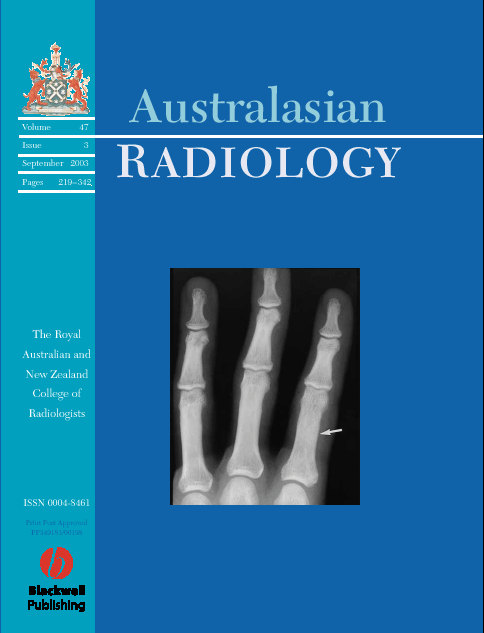Emergency embolization of spontaneous ruptured hepatocellular carcinoma: Correlation between survival and Child−Pugh classification
KY Lau MB BS, FRCR, DABR; TP Wong MB BS, FRCR; WWC Wong MB BS, FRCR; LTH Tan MB BS, FRCR; JKW Chan MB BS; ASL Lee BSc.
Summary
From February 1994 to April 2000, 29 emergency gelfoam embolizations for spontaneous ruptured hepatocellular carcinoma (HCC) performed in 28 patients were retrospectively reviewed. There were 11 patients in Child's A , 11 in Child's B and six in Child's C classification of cirrhosis. The duration of the procedure, artery embolized and complications were reviewed, and the Child−Pugh classification of each patient was correlated with their mean survival period. Embolization was done in 12 right hepatic arteries, two left hepatic arteries and 15 proper hepatic arteries. In one patient, the left hepatic artery was embolized initially but the proper hepatic artery was also embolized because another subcapsular liver tumour was found after reviewing the preangiogram CT scan. The entire procedure took 40−170 min (mean = 86 min) with no periprocedural complication. Following embolization, the mean survival period for Child's A class was 218.3 days, Child's B class was 83.4 days and Child's C class was 11.0 days. Transcatheter embolization is an effective treatment to arrest bleeding in spontaneous ruptured HCC. Patients with Child's A class cirrhosis have the longest survival. Selective embolization of either the right or the left hepatic artery alone carries the potential risk of missing multifocal HCC that might not be easily appreciated during angiography.




